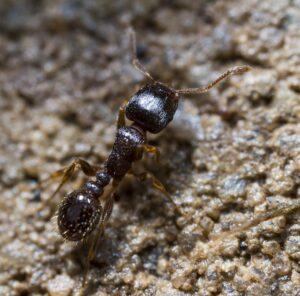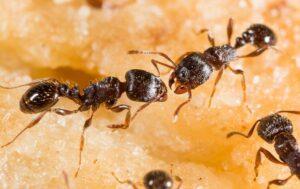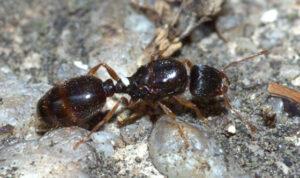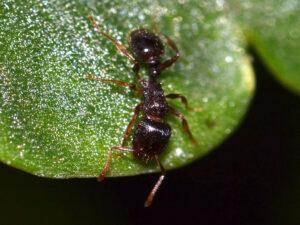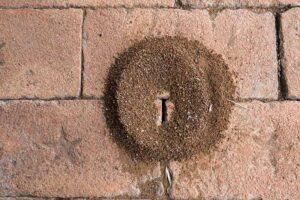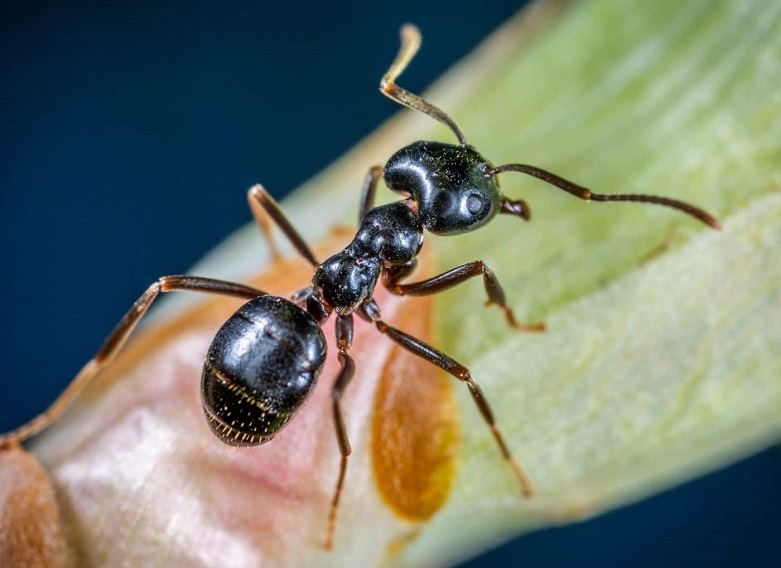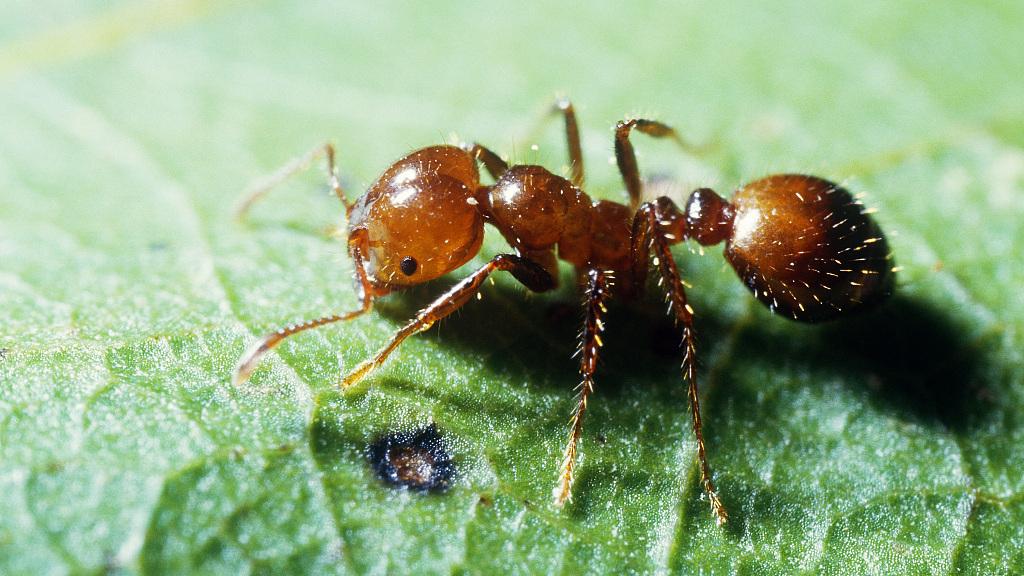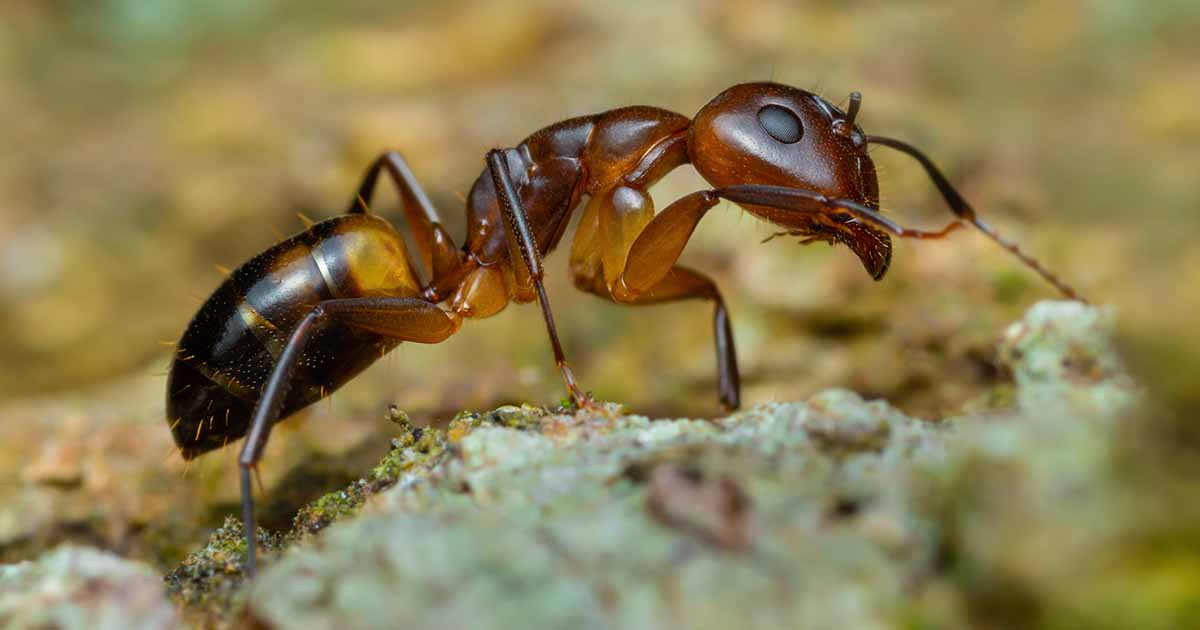Pavement Ant (Tetramorium immigrans)
Updated on
17/11/2022Pavement ants, also known as immigrant ant or sugar ant, are indigenous to Europe. Eventually, their range spread to the United States where they have become an annoying pest at present. Its name is an outcome of its habitat since they mostly build their nests in or near pavements. These ants, about a group of eight of them, were taken to space by the International Space Station in 2014. The main motive of the researchers was to see if they coordinated in the same way to search for their environment like they did on earth.
Scientific Classification
- Class:Insecta
- Order:Hymenoptera
- Family:Formicidae
- Genus:Tetramorium
- Species:T. immigrans
Conservation Status
Description
The workers mostly grow up to 4 mm; however, the queen ants are bigger, reaching to lengths of 8 mm.
They have dark brown or black bodies. The appendages present, however, appear lighter than the other parts of their body. One of their prominent identifying features is the parallel lines and grooves running from their head down to the thorax.
A single pair of spines can even be seen protruding from the thorax. They have a twelve-segmented antenna, with the club divided into three distinct sections. Their petiole (narrow waist) and post-petiole are closely similar in size and shape, with the latter being slightly bigger and shinier.
The new queen ants and drones have wings twice the size of workers.
Distribution: Native to Europe, but an invasive species throughout parts of North America found in about 23 states of the U.S. and five provinces of Canada.
Habitat: Outdoors: Under pavements, sidewalks, patios, and building foundations; Indoors: Near high-humidity areas like kitchen and bathrooms since they are attracted to moisture; they also occur near heat sources during winter
Do they bite: No; being docile and non-aggressive they avoid confrontation and rarely bite; however the workers do possess a small stinger capable of penetrating human skin, causing mild discomfort
Lifespan: Workers – 5 years; Queens – 15-20 years
Predators: Spiders like black widow, jumping, and lynx; snails, snakes
Behavior and Characteristics
Diet and Foraging
The colonies comprise around ten thousand worker ants that form an integral part of the foraging trail, starting from their nests ending up to the food source. They secrete pheromones along the trail that act as an identifying mark. This helps the nest mates reach their destination and safely carry food items back to their colony.
Being omnivorous, they feed on a wide range of food like dead insects, honeydew, nectar, seeds, and fruits. They even consume human food, especially those of a greasy texture, alongside bread, nuts, meat, cheese, and ice cream.
Nest and Colony
Their nests occupy an area of 1.2-4.8 sq.m, reaching a depth of 45-90 cm. These dwelling places are marked mainly by an entrance hole, with crater-shaped sand mounds near the entrances, seen mostly during summer.
They exhibit territorial behavior leading to large battles in neighboring colonies unrelated to one another. These fights mainly commence during spring and summer when the members of each colony indulge in demarcating their domains. The result of such an extensive war is the death of thousands of ants.
Besides the workers, which form a significant part of the colonies, it even comprises a single queen. However, two or more queens could inhabit a colony in rare cases.
Life Cycle
The nuptial flights begin during spring and summer when the drones and queens leave their nests in pursuit of their mates. The pavement ant drones seek out to mate the virgin queens. After the completion of the mating ritual, the newly fertilized queen searches for a nesting location and goes on to dig a chamber.
1. Egg Stage
The eggs the queen lay hatch after around two months, developing into the first generation of worker ants. These eggs appear small and white, barely visible to the human eye.
2. Larva Stage
The legless larvae evolve when the eggs hatch and feed on the pulps of food and insects.
3. Pupal Stage
The pupae remain within a case they for around themselves until they mature into adults.
4. Adult Stage
The adults appear brown or black, and until they become old enough to forage on their own, the onus lies on the queen to look after the first generation of young ants.
Comparison with Similar Species
vs. Carpenter Ants
Carpenter ants are bigger, with a length between 9- 13 mm. In contrast, the pavement ants appear smaller measuring around 4 mm, with the queens being 8 mm long.
Carpenter ants are primarily black or a combination of black and red. The pavement ants come in shades of brown or black.
They chew through wood, causing structural damage, a trait unseen in the pavement ants.
Getting Rid of Pavement Ants
Though these ants don’t cause any structural damage to buildings or property, their infestation in homes may result in a lot of trouble. As already mentioned, since the pavement ants are drawn towards moisture, it is advisable to eliminate any standing water outlets at home.
Also, try keeping the kitchen and bathroom dried most of the time. Check for little cracks or openings in your home, as these ants use these outlets to enter indoors.
In case of an infestation, placing bait near areas, they have inhabited the most would help. The preferable baits include sugar or protein-based ones filled with pesticides or even those containing boric acid or fipronil.
FAQs
The colony of pavement ants is monogynous, primarily with a single queen. However, in rare cases, it could be polygynous, marking the presence of two or more queens.
Yes, but not all. The winged male and female pavement ants produced by the queens are called swarmers. These reproductive ants leave their colony during spring to mate starting new colonies. New swarms evolve around June-July, which can prove a menace upon entering buildings in large groups.
Source
static.inaturalist.org, cdn.branchcms.com, objects.liquidweb.services, gardenerspath.com, pestworld.org




